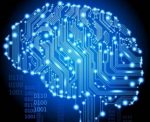 For the first time, the European Patent Office (EPO) has issued guidance on the patentability of artificial intelligence and machine learning technologies. The guidance will become valid on 1 November 2018.
For the first time, the European Patent Office (EPO) has issued guidance on the patentability of artificial intelligence and machine learning technologies. The guidance will become valid on 1 November 2018.
According to the Guidelines:
Artificial intelligence and machine learning are based on computational models and algorithms for classification, clustering, regression and dimensionality reduction, such as neural networks, genetic algorithms, support vector machines, k-means, kernel regression and discriminant analysis. Such computational models and algorithms are per se of an abstract mathematical nature, irrespective of whether they can be “trained” based on training data. Hence, the guidance provided in G-II, 3.3 generally applies also to such computational models and algorithms.
When examining whether the claimed subject-matter has a technical character as a whole (Art. 52(1), (2) and (3)), expressions such as “support vector machine”, “reasoning engine” or “neural network” are looked at carefully, because they usually refer to abstract models devoid of technical character.
Artificial intelligence and machine learning find applications in various fields of technology. For example, the use of a neural network in a heart-monitoring apparatus for the purpose of identifying irregular heartbeats makes a technical contribution. The classification of digital images, videos, audio or speech signals based on low-level features (e.g. edges or pixel attributes for images) are further typical technical applications of classification algorithms. Classifying text documents solely in respect of their textual content is however not regarded to be per se a technical purpose but a linguistic one (T 1358/09). Classifying abstract data records or even “telecommunication network data records” without any indication of a technical use being made of the resulting classification is also not per se a technical purpose, even if the classification algorithm may be considered to have valuable mathematical properties such as robustness (T 1784/06).
Where a classification method serves a technical purpose, the steps of generating the training set and training the classifier may also contribute to the technical character of the invention if they support achieving that technical purpose.
